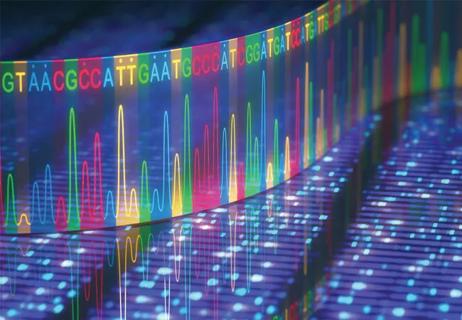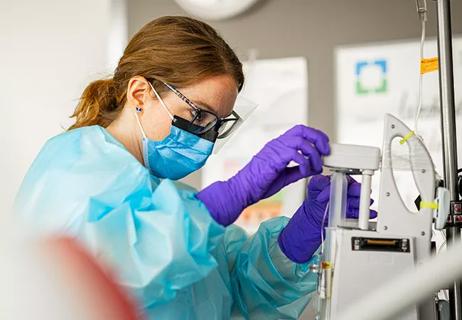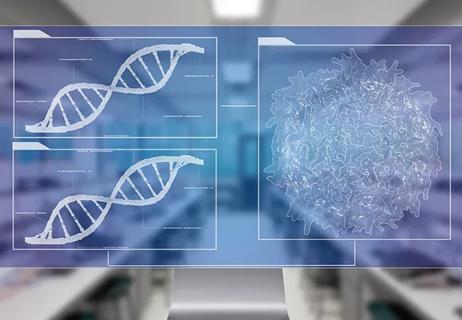Copy number variants may help predict clinical outcomes

Cleveland Clinic researchers have identified for the first time an explanation of why patients with identical PTEN mutations often have vastly different clinical presentations.
Advertisement
Cleveland Clinic is a non-profit academic medical center. Advertising on our site helps support our mission. We do not endorse non-Cleveland Clinic products or services. Policy
In a new study published in JAMA Network Open, a team of researchers led by Charis Eng, MD, PhD, discovered that copy number variations (CNVs) may act as genomic modifiers that influence the risk of autism spectrum disorder (ASD) and/or developmental delay (DD) versus cancer risk in individuals with PTEN mutations.
Germline mutations of the tumor suppressor gene PTEN are associated with a group of genetic disorders that increase the risk of certain cancers, cognitive and behavioral deficits, benign growths and tumors (i.e., hamartomas), and macrocephaly. These disorders are known collectively as PTEN hamartoma tumor syndrome (PHTS), but they manifest as a broad, difficult-to-predict range of clinical outcomes and have been found to inexplicably result in distinct subsets of patients with either cancer or ASD/DD. In fact, PTEN is one of the most common genes associated with ASD.
“Estimating clinical outcomes can be difficult, especially for phenotypically variable disorders. As such, why a mutation in one particular gene predisposes to disparate clinical outcomes, including inpatients with identical mutations, remains poorly understood,” Dr. Eng and her colleagues wrote in the paper.
Previous studies have indicated associations between CNVs, or large structural genetic changes involving the deletion and/or duplication of DNA segments, and neurodevelopmental disorders and sporadic cancers. Therefore, specific CNVs may be linked with either ASD/DD or cancer incidence in individuals with PTEN mutations.
Advertisement
To investigate these associations, Dr. Eng’s team quantified the total number of CNVs in 481 patients from three PHTS phenotype groups (i.e., PHTS-ASD/DD, PHTS-no ASD/DD and PHTS-cancer) with similar PTEN mutations.
They demonstrated an overall increased CNV burden per individual in patients with ASD/DD compared to those without ASD/DD or those with cancer. However, they found no difference in CNV burden between patients without ASD/DD and patients with cancer. They also determined that 10% of the PHTS-ASD/DD patients carried CNVs associated with neurodevelopmental disorders – compared to only 2.6% of PHTS-no ASD/DD and 1.7% of PHTS-cancer patients – while no CNVs involved in known cancer-associated genes were identified in PHTS-cancer patients.
These findings suggest that CNVs operate as genomic modifiers of ASD/DD risk in individuals with PHTS, meaning they not only provide insight into the ASD/DD versus cancer phenotypes associated with PTEN mutations but also may aid in the prediction of clinical outcomes to inform PHTS medical management. Furthermore, the study demonstrates that CNV burden analysis may also be applied to other clinically heterogeneous disorders for which no outcome-specific predictors are known.
Dr. Eng was the first to link PTEN to Cowden syndrome, which is a PHTS disorder, and subsequently to ASD. She is the inaugural chair of Cleveland Clinic Lerner Research Institute’s Genomic Medicine Institute and inaugural director of the Center for Personalized Genetic Healthcare, which includes the PTEN Multidisciplinary Clinic for children and adults with a confirmed or possible diagnosis within the PHTS spectrum.
Advertisement
Note: This article was originally published here.
Advertisement
Advertisement

Study identifies Ketorolac as a potential repurposable drug

The relationship between MTHFR variants and thrombosis risk is a complex issue, but current evidence points to no association between the most common variants and an elevated risk

One-time infusion of adenovirus-based therapy is designed to restore heart muscle function

Cleveland Clinic researchers receive $2 million grant from the National Institutes of Health

New Cleveland Clinic fellowship fosters expertise in the genetics of epilepsy

Integrates genetic and clinical data to distinguish from GEFS+ and milder epilepsies

First-of-kind study aims to enable prevention of brain disorders before symptoms appear

Advanced genomic research techniques show potential to treat a variety of conditions